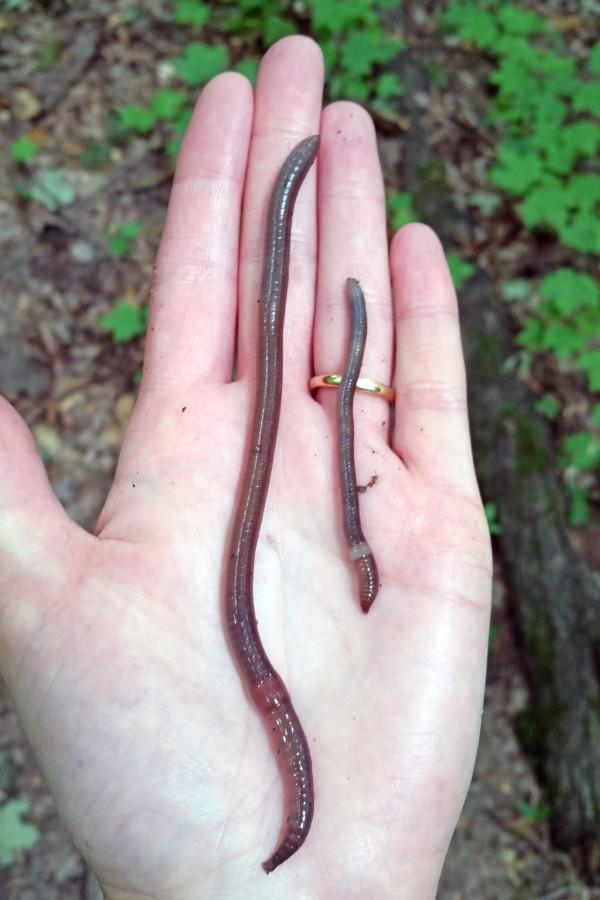Jumping Worms: Fast-Moving Agents of Destruction

Species of jumping worms can vary in size. Look for the pale band.
By Susannah Wood
Jumping worm, Alabama jumper, Jersey wriggler: the names sound whimsical and reminiscent of those cute Mexican jumping beans that are still available for purchase. But unlike the larvae that make the beans jump, these critters are no fun and dangerous for any garden or woodland.
Now, the Norfolk Library’s newly established native plant garden, east of the building, is endangered by an infestation discovered on the bank above. The bank (also owned by the library) was recently replanted and mulched, but by this spring the mulch had been completely consumed and replaced with worm castings, a sure sign of the presence of these voracious creatures.
As of this writing, the library board is considering how best to proceed. The worms have also become widely distributed in Litchfield County and present major problems elsewhere in the country.
Three jumping worm species have invaded the Eastern United States from East Asia, with the documented arrival of the first worms at the Bronx Zoo in 1948. The threat comes from the worms’ wholesale consumption of the upper few inches of soil where they live. That ruins the soil’s layered structure and demolishes organic material, mycorrhizal networks, native seed banks and the rootlets of young plants. Many native plants cannot thrive in this altered soil while invasive species do well.
The worms do not actually jump but are adept climbers and extremely active when disturbed. In late summer and early fall, the adults are easy to identify by a wide, pale collar encircling the body close to the head. It lies flat and smooth. The juveniles, present in spring, do not have the collar, but display the characteristic thrashing, snake-like movements if picked up.
As with so many problems, prevention works better than eradication. One of the worst sources of infestation is commercial mulch. They can also be found in compost, nursery plants and yard waste and carried along by boot and tire treads and landscaping tools.
Worm populations love moisture and congregate in large numbers near boat ramps where fisherman have used them for bait and spread outward at a rapid rate. Worms in mulch and compost can be killed by sandwiching material between plastic sheets in the sun and letting it roast. Buy bare root plants or consider washing the roots of nursery stock before repotting in clean soil. Contaminated soil should go into the trash.
The Connecticut Agricultural Extension Service has issued an information sheet on prevention and control. It is the major source for this article. Copies of it are available at the HUB or search on jumping worms at https://portal.ct.gov/caes.
